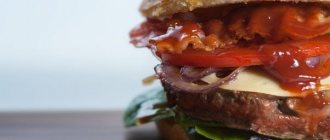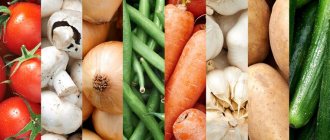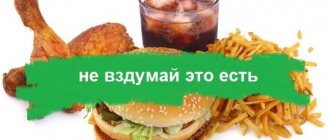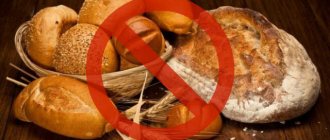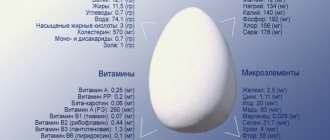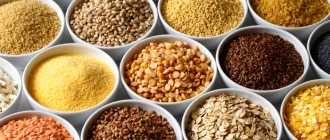A lipid-lowering diet reduces bad cholesterol levels. An increased amount of it harms the cardiovascular system, which threatens heart attacks, strokes, and ischemia. Less serious consequences are nausea, vomiting, and the formation of atherosclerotic plaques. The quality of life deteriorates significantly.
A lipid-lowering diet is prescribed for obesity, diabetes, and the risk of developing heart pathologies. This nutritional system is used in combination with medical therapy. Suitable for healthy people to lose excess weight.
The lipid-lowering diet is based on eating large amounts of complex carbohydrates, which promote weight loss. They improve lipid metabolism in the body.

50-60% of the diet consists of natural vegetables, fruits and grain products . Most of it should be raw and fresh. The diet involves limiting fats and proteins. You need to eat fish and seafood. The diet menu also contains a large amount of proteins.
Complex carbohydrates rich in fiber and proteins help eliminate hunger, energize and cleanse the body of waste and toxins . They provide fuel for physical activity and building material for muscles.
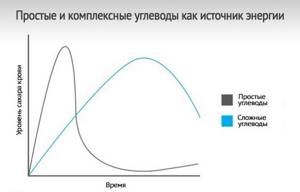
It is worth sticking to this diet for 7 days. Nutrition rules:
- Hunger strikes should not be allowed. Meals should be small and frequent. It is advisable to eat up to 5-6 times a day. The serving size should fit in a cup.
- Products should be chosen of high quality, as well as low-calorie and nutritious.
- All dishes must be stewed, boiled or baked, and also eaten raw.
- The latter is allowed to eat at least 4 hours before going to bed.
- You can consume no more than 1300 kcal per day.
- Be sure to engage in physical activity while dieting.
- Protein products (cottage cheese, meat and seafood) should be about 50-60 g per day, but with a minimum amount of fat.
- You can eat no more than 2 slices of bread per day.
Contraindications to a lipid-lowering diet:
- bearing a child and breastfeeding;
- exacerbation of chronic ailments;
- minor age;
- with insulin-dependent diabetes mellitus;
- with a lack of calcium.
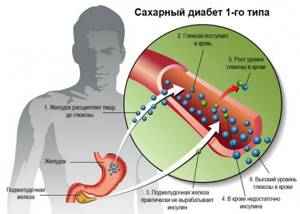
The system should be perceived as a change in diet for the rest of your life . It is impossible to completely exclude fats from the diet, as this leads to a serious deficiency of nutrients. This causes disturbances in the normal functioning of the body.
Allowed foods during the diet:
- seafood and fatty fish (halibut, hake, haddock, cod, sardines and tuna);
- chicken fillet and turkey;
- vegetable oils from peanuts, rapeseed, flax seeds and olives;
- all types of fruits, berries and vegetables, raw, boiled, canned without sugar, frozen (carrots, zucchini, eggplants, turnips, radishes, white cabbage, tomatoes, cucumbers, legumes, corn, squash);
- pears, bananas, apples, peaches, strawberries, currants, pineapples;
- herbs and spices: spinach, dill, parsley, basil, green salad;
- different types of cereals and cereals;
- vegetable broth;
- walnuts and almonds;
- dried fruits;
- vegetable fibers;
- low-fat dairy products: cottage cheese, kefir, natural yogurt, white cheeses;
- unsweetened drinks: green tea, herbal infusions, fruit drinks and compotes.
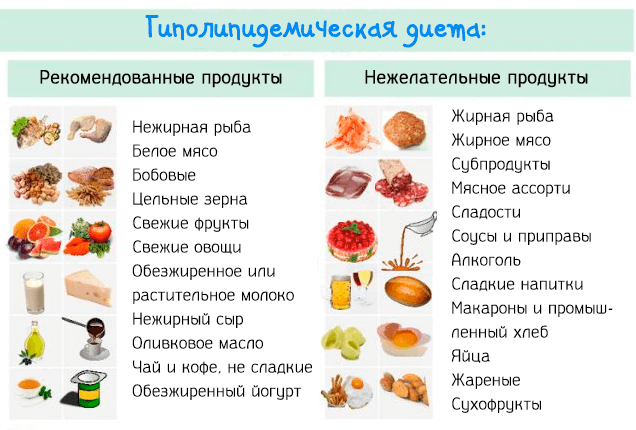
People who do not suffer from critical excess weight can dilute the lipid-lowering diet with rice cooked in water, bread made from rye flour or coarsely ground, and cereal porridges without sugar. The diet does not allow you to starve, while saturating the body with microelements and vitamins. A lipid-lowering diet requires excluding the following foods from the diet:
- saturated (animal) fats: pork, beef, lamb, duck, sausages, ham, meatballs, liver, brains, margarine, mayonnaise, coconut oil, red poultry, canned food;
- fatty cheeses and dairy products;
- pasta;
- fast food;
- sweets: chocolates, marmalades, sweets, halva, marshmallows and marshmallows;
- baked goods and white bread, cookies, buns, cakes and pastries;
- sweet and carbonated drinks;
- all types of alcohol;
- sturgeon liver and caviar, crayfish.
Weekly menu for a lipid-lowering diet:
| Day of the week | Breakfast | Lunch | Dinner | Afternoon snack | Dinner |
| Monday | Oatmeal with water and green tea | Fruit or a glass of low-fat fermented milk drink | Stewed bell peppers and zucchini, you can add a little boiled chicken fillet | Sandwich made of rye bread and vegetables | Low-fat meat with kefir |
| Tuesday | Cup of bran with dried fruits and herbal tea | A glass of low-fat natural yogurt with berries | Boiled buckwheat with chicken | Cottage cheese with greens | Cottage cheese casserole without sugar, but you can add banana or pear |
| Wednesday | Omelette with stewed vegetables | Rye toast and jam | Vegetable soup with chicken meatballs | Greek salad with olive oil | Baked fish |
| Thursday | Low-fat cottage cheese with raisins and green tea | A glass of low-fat fermented milk drink | Rice on water with a piece of boiled chicken or turkey fillet | Fruit salad with lemon juice | Baked peppers and kefir |
| Friday | Rye toast with honey and coffee | Grapefruit | Fruit and curd casserole | Cucumbers or tomato with boiled egg | Vegetable salad with olive oil dressing |
| Saturday | Grapefruit and hot coffee | Omelette | Buckwheat with fish cutlets | Greek salad with feta cheese | Baked fish with vegetables |
| Sunday | Oatmeal on water with freshly squeezed juice | Glass of fermented milk drink | Millet porridge with dried fruits | Grapefruit | Vegetable stew |
Recipes for a lipid-lowering diet:
- Cheesecakes with carrots . Ingredients: a pack of low-fat cottage cheese, carrots, egg whites, a couple of tablespoons of flour, semolina, half a glass of skim milk, salt, vegetable oil. The vegetable is peeled and finely grated. Boil cottage cheese, carrots, semolina with milk and butter over low heat. Next, add protein, cottage cheese and salt to the cooled mass. The dough is kneaded and cheesecakes are formed. You can bake in the oven until golden brown.
- Semolina and apple pudding. Ingredients: chicken eggs, semolina, apples, salt, butter, 50 ml of low-fat milk. Peel and cut the fruits. Cook semolina porridge in milk. Then add the remaining ingredients to the mixture and beat everything thoroughly. Place the mixture on a baking sheet and bake in the oven for about 40 minutes.
- Dessert "Snowball" . Ingredients: egg whites, sweetener, two glasses of water. First, cool the whites in the refrigerator, then beat thoroughly with sweetener and place in boiling water. Cook for 1 minute.
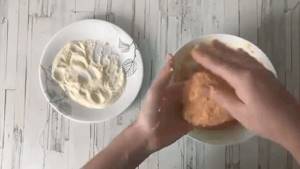
The hypolipidemic system allows you to get rid of up to 10 kg of excess weight. During the diet, your well-being and mood improve. The pain in the heart area goes away, shortness of breath stops, and there are no more ailments. But all these results can be achieved only after a couple of times. You can check the results of your diet by taking a blood test to check your cholesterol level. Better yet, do it before and after.
When leaving the diet, it is important to gradually return to your usual lifestyle. However, the principles of fractional and lipid-lowering nutrition should be maintained to improve and prolong the result. Experts recommend creating your future diet according to the “80 out of 100” principle, that is, maintaining 80% of the diet system and diversifying the menu by 20%.
Read more in our article on the lipid-lowering diet.
Content:
- 1 What is a lipid-lowering diet
- 2 Efficacy and results of the diet
- 3 What foods should you avoid?
- 4 List of approved products
- 5 Sample menu for the week
- 6 How to properly exit a lipid-lowering diet?
- 7 Contraindications
A lipid-lowering diet is most suitable for the therapeutic category, as it is based on the consumption of foods that do not contain cholesterol that is harmful to the body. Thanks to this, the diet has a healing effect and at the same time allows you to get rid of extra pounds.
Indications
People suffering from diseases characterized by impaired functional activity of the thyroid gland can adhere to a lipid-lowering diet. The main indications also include pathologies of the kidneys and bladder (including cholelithiasis).
People who systematically abuse tobacco products and alcoholic beverages are at risk. Experts recommend adhering to this nutritional system if you suspect atherosclerosis (atherosclerotic lesions of the abdominal cavity, brain and aorta).
People over 45 years of age and patients in psychoneurological dispensaries need to maintain a diet constantly.
↑ What is a hypolipidemic diet
When following a lipid-lowering diet, the level of consumption of easily digestible carbohydrates and cholesterol substances in the human diet is reduced.
Harmful cholesterol is most found in foods that contain plant fibers in soluble and insoluble forms, as well as mono- and polyunsaturated fats. As you know, harmful cholesterol is deposited on the walls of blood vessels, forming atherosclerotic plaques. Because of them, blood circulation is disrupted, and blood clots and varicose veins form. But the worst thing is heart disease (stroke, heart attack, etc.). Elevated cholesterol levels have a negative impact on the course of diabetes. In this regard, this lipid-lowering diet is indicated for many pathological disorders.
Contraindications
Despite the fact that the standard lipid-lowering diet is therapeutic in nature and prescribed by doctors, it may not be suitable for everyone. This power system is not recommended for use in the following cases:
- during pregnancy and breastfeeding;
- with exacerbation of chronic ailments;
- under age;
- with insulin-dependent diabetes mellitus;
- with a lack of calcium.
Before you start following a diet, you need to consult with your doctor and undergo the necessary medical examination.
It is worth noting that this system should generally be perceived as a change in diet for the rest of your life. It is impossible to completely exclude fats from the diet, as this leads to a serious deficiency of nutrients. This causes disturbances in the normal functioning of the body.
↑ Efficiency and results of the diet
The lipid-lowering diet is not intended for rapid fat burning, but it is very effective for lasting results. So, in 30 days you can lose from 2 to 8 kg of weight, but the effect will last for a long time. The first improvements in the condition are felt by the end of the diet week.

- lowering cholesterol levels;
- resorption of atherosclerotic plaques;
- improvement of heart function;
- acceleration of blood circulation;
- weight loss;
- saturating the body with useful substances;
- removal of harmful substances from the body;
- decreased appetite;
- lightness in the body;
- elimination of insomnia;
- overall health improvement.
A lipid-lowering diet is not mandatory, but is considered recommended because it is balanced. If you build your daily diet on its basis, you can get rid of many health problems.
Principles and rules of diet Any diet therapy is doomed to failure if you do not adhere to specific rules. The lipid-lowering diet also has its own principles:
- It is strictly forbidden to arrange fasting days like fasting, since for many diseases, and especially type 2 diabetes, this is contraindicated.
- You need to eat in small doses.
- One dish should contain proteins, carbohydrates and fats in a balanced manner.
- Meals must be fractional. For example, you are supposed to eat 150 grams of meat per day, which means this dose should be divided into 5 doses.
- You will have to count the calories you eat every day.
- The maximum daily calorie content should not exceed 1200 kcal.
- It is forbidden to violate the established nutrition schedule.
- The diet should be divided into at least 5 meals.
- You can't get carried away with snacking.
- The time between meals should be 2-4 hours. But the night interval increases to 10 hours.
- The last dinner should be at least 2-3 hours before bedtime.
- If you haven’t been involved in sports, now you need to get active and pay attention to your physical fitness.
- Smoking is not recommended. This slows down the metabolic process.
In some cases, the doctor may prescribe a higher daily calorie diet than 1200 kcal. The fact is that, for example, with diabetes it is recommended to eat more food. Otherwise, it will harm the body. Therefore, you should not resist such doctor’s recommendations.
Why do you need to control your cholesterol levels?
Experts recommend constantly monitoring cholesterol levels. This compound of organic origin is similar in structure to lipophilic alcohols. Cholesterol enters the human body with food, and the biliary organ can synthesize it independently.
An organic compound in small quantities is vital; it has the following functions:
- ensuring normal synthesis of vitamin D and bile acids;
- participation in the processes of synthesis of estrogens, androgens, mineralocorticoids and glucocorticoids;
- strengthening the cytoplasmic membranes of cells (framework), ensuring their elasticity and resilience.

The above processes occur correctly in the human body if the cholesterol concentration does not exceed 5.3 mmol/l. With a repeated increase in the level of an organic compound, lipid metabolism in the body is disrupted.
Cholesterol does not dissolve in blood or water. Low-density lipoproteins (the so-called “bad” cholesterol) are considered the most dangerous for the human body. They accelerate the formation of fatty plaques on the vascular walls, which increases the likelihood of developing atherosclerosis.
↑ What products should you give up?
- Bakery pastries, pastries, cakes, muffins, cookies and the like.
- Potatoes - fried, fries, chips.
- Candies, ice cream, etc.
- Sugar, jams, preserves, preserves.
- Fermented milk products with high fat content, milk cream, condensed milk.
- The fatty part of chicken and fatty meat in general.
- Raw smoked and semi-smoked sausages, bacon, lard.
- Fast food, pizza.
- Some fish and caviar.
- Egg yolk.
- Seafood: lobster, squid, cuttlefish, oysters, shrimp and other shellfish.
- Canned pickles, especially vinegar-based, smoked ones.
- Fat and oil of animal origin.
- By-products: liver, heart, kidneys.
- Strong coffee or tea.
- Carbonated drinks.
- Alcohol (including low-alcohol drinks).
- Fatty broths and jellied meats.
- Overly spicy spices.

Basic Rules
The basic rules of the lipid-lowering weight loss method differ little from other diets. In principle, this is simply a program of proper nutrition, in which you need to exclude easily digestible carbohydrates and foods containing large amounts of cholesterol: butter, lard, fermented milk products, processed foods, cheeses, smoked meats.
General rules:
- fractional meals in small portions (5-6 times a day, 200-250 g);
- dinner or snack three hours before bed;
- give preference to boiling, stewing and steaming;
- create a diet with a daily amount of calories – 1200-1300 kcal;
- adhere to the correct drinking regime;
- reduce salt intake;
- replace animal fats with vegetable ones;
- eat rye or whole grain bread.
Below you will find a list of prohibited and permitted foods, thanks to which you can create a diet that allows you to eat a varied diet. This is especially important for people who are indicated to adhere to a diet constantly.
↑ List of permitted products
- Bread: wheat bread in the form of crackers, whole grain variety, rye.
- Fresh, stewed and baked fruits and vegetables.
- Cereals: oatmeal, brown rice, beans, peas, soybeans.
- Nuts: peanuts, sesame seeds, sunflower seeds.
- Fatty fish (it contains omega-3, which lowers cholesterol).
- Vegetable oil of sunflower and olive.
- Red wine in moderation.
- Lean meat - chicken, veal, rabbit, beef, quail, turkey.
- Low-fat fermented milk products.
General rules
A lipid-lowering diet is indicated for people suffering from diseases of the cardiovascular system. The list of products includes foods of plant origin.
The principles of the diet are standard, you must:
- introduce whole grain, bran or rye bread into the diet (bread can be used);
- partially replace animal fats with vegetable oils;
- minimize the amount of salt and spices consumed (by 25-35% of the usual norm);
- maintain a drinking regime, drinking only permitted drinks;
- create a new diet, observing caloric intake (no more than 1300 kcal per day);
- prepare dishes correctly (it is preferable to boil, stew or steam food);
- do not overeat before bed (the last meal should be no later than three 3-3.5 hours before bedtime).

The basic rule of a lipid-lowering diet is split meals.
Calorie content and saturated fat content of dishes
The calorie content of ready-made meals usually varies depending on the number of products included in their composition. You can independently calculate the nutritional value of appetizers, salads, desserts and soups.
For this you will need:
- electronic kitchen scales, as compact and accurate as possible;
- tables with calorie content for each individual product.

Calorie content of ready meals:
| Category | Name | Calorie content per 100 g |
| First meal | Beetroot borscht made from fresh cabbage | 55-60 kcal |
| Pea soup | 53-57 kcal | |
| Mushroom soup | 50-52 kcal | |
| Chicken soup with egg | 55-70 kcal | |
| Okroshka with vegetables and meat | 38-40 kcal | |
| Second courses | Entrecote | 320-335 kcal |
| Beef Stroganoff | 330-350 kcal | |
| Steak | 170-350 kcal | |
| Beef baked with vegetables | 180-360 kcal | |
| Casserole with meat and potatoes | 140-170 kcal | |
| Roast | 180-340 kcal | |
| Salads | With seafood (shrimp, squid, crab) | 120-180 kcal |
| From vegetables (potatoes, mushrooms, corn, cucumbers) | 100-130 kcal | |
| From mackerel, tuna, sardines or herring (canned) | 120-150 kcal | |
| Olivie | 120-160 kcal | |
| The vinaigrette | 130-145 kcal | |
| Snacks | Assorted fish | 250-270 kcal |
| Assorted meats | 370-390 kcal | |
| Cheese slices | 390-405 kcal | |
| Granular caviar, herring and other seafood | 210-260 kcal | |
| Vegetable snack | 75-110 kcal | |
| Dessert | Fruit soufflé | 115-120 kcal |
| Meringue | 220-310 kcal | |
| Jelly (fruit, creamy) | 90-250 kcal | |
| Marmalade | 120-160 kcal | |
| Homemade condensed milk | 150-320 kcal | |
| Sauces | Mushroom | 70-80 kcal |
| Wine | 125-185 kcal | |
| Sour cream | 212-220 kcal | |
| Tomato-vegetable | 200-220 kcal | |
| Lactic | 135-150 kcal |
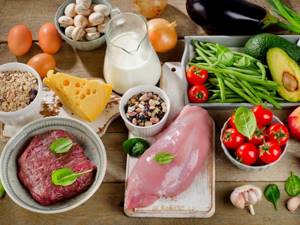
Before subtracting the nutritional value of a particular dish, you must first weigh the kitchen container to obtain the net weight of the product.
Table of permitted products
A lipid-lowering diet (the list of products allowed for consumption is determined individually) allows the consumption of:
| Category | Name | Calorie content, kcal | Fats, g | Carbohydrates, g | Proteins, g |
| Vegetable oils | Sunflower | 870-880 | 95-100 | 0 | 0 |
| Olive | 870-890 | 95-100 | 0 | 0 | |
| Linen | 870-890 | 95-100 | 0 | 0 | |
| Creamy | 740-74 | 81,9 | 0,6-0,9 | 0,3-0,6 | |
| Seafood, fish | Sea kale | 43-50 | 4,9-5,3 | 0 | 0,6-0,9 |
| Mussels | 45-52 | 1,3-1,6 | 0 | 8,9-9,2 | |
| Squid | 118-125 | 2,6-2,9 | 1,8-2,1 | 20,9-21,5 | |
| Lean fish | 130-137 | 4,6-5,1 | 0 | 17,9-18,7 | |
| Meat, sausages | Chicken | 108-115 | 1,1-1,4 | 0 | 22,9-23,5 |
| Turkey | 80-85 | 0,6-0,8 | 0 | 19,1-19,5 | |
| Dietary boiled sausage | 160-175 | 13,3-13,7 | 0 | 11,9-12,5 | |
| Rabbit meat | 155-160 | 7,9-8,2 | 0 | 7,9-8,3 | |
| Lean beef | 85-90 | 0,4-0,7 | 1,7-19 | 17,9-18,5 | |
| Dairy products | Natural yogurt without additives | 55-62 | 1,9-2,1 | 6,1-6,3 | 4,2-4,4 |
| Low-fat milk | 30-32,2 | 0,9-1,2 | 4,3-4,9 | 1,9-2,1 | |
| Cereals | Barley | 320-325 | 1,1-1,4 | 65,5-66,9 | 10,2-10,5 |
| Millet | 340-350 | 3,2-3,4 | 68,9-70 | 10,9-11,9 | |
| Oatmeal | 340-345 | 60,9-61,5 | 59,5-60,5 | 11,9-12,5 | |
| Buckwheat | 310-315 | 3,1-3,4 | 62,8-63,2 | 11,9-12,5 | |
| Seeds, nuts | Linen | 520-530 | 42,1-42,5 | 28,5-29 | 18,2-18,5 |
| Sunflower | 570-575 | 50,9-52,5 | 3,2-3,6 | 19,9-20,5 | |
| Cashew | 640-645 | 54-54,5 | 12,9-13,5 | 24,9-25,9 | |
| Almond | 495-505 | 39,9-40,1 | 19,9-20,1 | 14,9-15,2 | |
| Berries | Currant | 40-45 | 0,2-0,3 | 6,9-7,4 | 0,9-1,1 |
| Gooseberry | 42-45 | 0,1-0,3 | 11,9-12,1 | 1,6-0,8 | |
| Fruits | Apples | 40-45 | 0,2-0,5 | 8,9-9,9 | 0,2-0,5 |
| Lemons | 13-17 | 0,1 | 2,9-3,1 | 0,6-0,8 | |
| Peaches | 42-47 | 0,1 | 10,9-11,4 | 0,8 | |
| Pears | 40-45 | 0,1-0,4 | 9,9-11 | 0,1-0,5 | |
| Grenades | 50-55 | 0 | 12,9-14 | 0,8 | |
| Oranges | 33-35 | 0,1-0,3 | 8,2-8,4 | 0,7-1 | |
| Mango | 65-68 | 0,1-0,4 | 10,9-11,6 | 0,2-0,4 | |
| Vegetables | Asparagus | 18-21 | 0,1 | 2,9-3,2 | 1,7-2 |
| Beet | 38-410,1 | 7,9-8,9 | 1,4-1,6 | ||
| Tomatoes | 18-21 | 0,1 | 3,9-4,3 | 0,5 | |
| bell pepper | 24-26 | 0 | 5,2-5,4 | 1,1-1,4 | |
| Carrot | 30-33 | 0,1 | 6,5-7 | 1,1-1,4 | |
| Cauliflower | 27-30 | 0,1-0,2 | 3,9-4,1 | 1,7-1,9 | |
| Broccoli | 25-27 | 0,1-0,3 | 5,1-5,3 | 2,8-3,1 |

The basis of the diet is fruits and vegetables. Eggs may be present on the menu. They, like meat, are consumed no more than 2-3 times a week.
Table of prohibited products
A lipid-lowering diet (the list of products is determined individually) prohibits the use of:
| Category | Name | Calorie content, kcal | Fats, g | Carbohydrates, g | Proteins, g |
| Seafood, fish | Cod liver (canned) | 610-615 | 63,2-66,1 | 0,9-1,3 | 3,9-4,3 |
| Mackerel, herring (canned) | 85-90 | 1,8-2,1 | 0 | 15,9-17,5 | |
| Lightly salted black caviar | 200-210 | 8,9-9,6 | 0 | 27,9-28,5 | |
| Lightly salted red caviar | 250-270 | 14,9-15,3 | 0 | 31,9-32,3 | |
| Smoked fillet | 185-195 | 9,7-10,1 | 0 | 18,9-19,4 | |
| Dried fish | 180-195 | 9,7-10,1 | 0 | 25,4-27,1 | |
| Sausages and meat products | Goose meat | 350-370 | 32,9-33,5 | 0 | 15,9-16,2 |
| Smoked duck breast | 335-345 | 27,9-29,1 | 0 | 18,9-19,2 | |
| Duck meat | 340-355 | 60,9-62,5 | 0 | 18,9-19,4 | |
| Smoked chicken fillet | 175-185 | 7,9-8,5 | 0 | 26,9-29,1 | |
| Smoked, boiled, milk sausages | 270-320 | 24,9-30,1 | 0 | 11,9-12,6 | |
| Sausages, bacon | 320-345 | 30,9-32,1 | 1,7-2,1 | 9,8-10,25 | |
| Smoked sausage | 600-620 | 62,5-64,2 | 0,1-0,4 | 8,9-10,1 | |
| Semi-smoked sausage | 450-470 | 43,2-45,2 | 0 | 15,9-17,2 | |
| Beef brains | 110-125 | 8,9-9,7 | 0 | 8,9-9,5 | |
| Beef kidneys | 65-70 | 1,4-1,8 | 0 | 11,5-13,2 | |
| Beef liver | 95-100 | 2,9-3,2 | 0 | 16,9-18,1 | |
| Salted, smoked lard | 780-800 | 88,9-90,1 | 0 | 1,9-2,5 | |
| Lard | 840-860 | 91,9-93,5 | 0 | 1,1-1,6 | |
| Pork kidneys | 75-85 | 2,9-3,2 | 0 | 12,9-13,2 | |
| Pork liver | 105-120 | 20,9-22,5 | 0 | 17,5-19,5 | |
| Pork | 250-300 | 20,19-21,2 | 0 | 14,6-17,2 | |
| Dairy products | Fat cottage cheese | 230-240 | 17,9-18,2 | 2,7-3,1 | 13,5-14,2 |
| Medium fat cottage cheese | 160-185 | 10,9-11,3 | 0,9-1,2 | 15,6-16,3 | |
| Hard cheeses | 350-370 | 29,4-30,1 | 0,1-0,4 | 15,9-16,5 | |
| Sour cream (25%) | 240-250 | 24,9-25,6 | 1,9-2,6 | 2,4-2,8 | |
| Cream | 200-215 | 18,9-20,5 | 3,4-4,1 | 2,7-3,2 | |
| High fat milk | 68-75 | 4,2-4,7 | 4,2-4,9 | 3-3,5 | |
| Low-fat milk | 60-65 | 3,5-3,9 | 4,2-4,9 | 2,5-2,8 | |
| Sweets, confectionery | Jam | 250-265 | 0,1-0,3 | 62,4-64,2 | 0,2-0,4 |
| Berry jam | 230-240 | 0,1-0,2 | 55,4-56,4 | 0,2-0,5 | |
| Chocolate candies | 450-480 | 18,9-20,1 | 65,9-67,2 | 3,9-4,4 | |
| Creamy, milk, butter cream | 280-320 | 25,4-26,5 | 15,4-17,2 | 0,1-0,4 | |
| Buns, cookies | 350-420 | 11,7-12,5 | 73,5-76,2 | 7,4-8,1 | |
| Fruits, vegetables, berries | Mushrooms | 35-40 | 1,9-2,1 | 2,4-2,6 | 3,2-3,6 |
| Grape | 60-70 | 0,1-0,3 | 15,6-16,9 | 0,4-0,7 | |
| Bananas | 90-96 | 0,1-0,3 | 20,9-21,6 | 1,4-1,6 | |
| Sorrel | 17-20 | 0,1-0,4 | 2,8-3,1 | 1,4-1,6 | |
| Spinach | 20-25 | 0,1-0,4 | 1,9-2,1 | 2,4-3,1 | |
| Black radish | 30-35 | 0,1-0,3 | 6,5-6,8 | 1,7-2,1 | |
| Red radish | 18-21 | 0-0,2 | 3,2-3,5 | 0,9-1,3 | |
| White radish | 19-22 | 0-0,2 | 3,1-3,5 | 1,1-1,5 | |
| Radish | 18-20 | 0-0,2 | 3,2-3,5 | 0,9-1,4 |
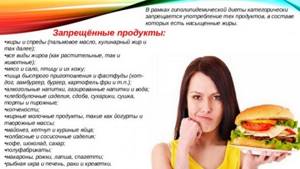
It is necessary to completely avoid smoked, salty, fatty and sour foods. The list of prohibited foods includes white rice, pasta, and semolina. It is not recommended to consume by-products.
↑ Sample menu for the week
A lipid-lowering diet involves eating 5 meals a day. Every day you need to eat a certain amount of different foods. And be sure to adhere to all regulations and requirements. This is the only way you will be able to achieve maximum results. The first day
- The first breakfast includes boiled oatmeal (necessarily with water) and a glass of green tea.
- For second breakfast, you can eat a fruit and berry salad (fruits are optional, but low in calories), weighing 250 grams.
- For lunch, eat rice porridge (200 g), peppers stuffed with vegetables (100 g in total) and apple juice.
- For an afternoon snack, give preference to 1 pear and a bread crumb.
- For dinner, cook vegetable borscht.
Second day
- In the morning, eat a vegetable salad with olive oil (250 grams) and drink black tea.
- For lunch, treat yourself to plum and grapefruit.
- For lunch, boil chicken fillet and buckwheat porridge. A serving should weigh no more than 200 grams. Make peach juice.
- For an afternoon snack, eat dried fruits (250 g).
- For dinner, bake fatty fish and make a vegetable salad. You need to drink it with non-carbonated mineral water.
Day three
- After waking up, treat yourself to a portion (250 grams) of low-fat cottage cheese, wash it down with coffee without sugar.
- For second breakfast, eat mango and other fruits, drink green tea.
- For lunch, prepare soup only from vegetables (serving 300 g), and allow yourself to eat 2 slices of rye bread.
- For an afternoon snack, drink a glass of still mineralized water and eat Greek salad.
- For dinner - boiled beef and stewed vegetables. In total the dish is 400 grams. You can drink mineral water.
Day four
- For breakfast, prepare a standard portion of brown rice porridge, wash it down with mango juice.
- For second breakfast, allow yourself a few crackers and 1 orange.
- For lunch, prepare vegetable borscht, wash it down with a cup of black tea.
- For an afternoon snack - salad with seaweed.
- For dinner – juice and oatmeal.
Day five
- For breakfast, cook millet porridge and drink green tea.
- For second breakfast, make natural juice and eat a couple of tangerines.
- For lunch again, vegetable borscht, but with the addition of a small amount of lean beef, and black tea.
- The afternoon snack includes fruit and berry salad.
- Dinner – steamed fatty fish, a glass of mineralized water.
Day six
- For breakfast, boil buckwheat porridge in water (200 grams) and drink a cup of green tea.
- For second breakfast, prepare seaweed salad and any natural juice.
- For lunch, cook mushroom soup and fish, drink mineral water.
- For an afternoon snack, brew green tea and add a spoonful of honey to it. Eat 1 apple (preferably green).
- Dinner includes boiled potatoes and vegetable salad, natural juice (250 grams each).
Day seven
- For breakfast you will need instant coffee and oatmeal.
- For second breakfast – green tea, a couple of peaches.
- For lunch, cook Russian cabbage soup with chicken fillet, wash it down with still mineral water.
- For an afternoon snack, give preference to kefir (fat content maximum 1.5%) and nuts.
- For dinner, stew vegetables and drink juice.
Recipes
A small selection of interesting recipes for a lipid diet:
- Carrot cheesecakes. The main ingredient is a package of low-fat cottage cheese. You will also need carrots, a couple of tablespoons of flour, semolina, 1 protein, 0.5 cups of low-fat milk, a little salt, olive oil. Carrots need to be grated on a fine grater. Then add semolina with milk and cottage cheese and put it on low heat in a saucepan. After cooling, protein, salt and flour are added and the dough is kneaded. Bake the formed cheesecakes in the oven.
- Apple semolina pudding. Chop the peeled apples. Next, cook milk semolina porridge, then add protein, salt and butter to it. After mixing all the ingredients, beat with a mixer. Place the mixture on a baking sheet or in a mold and bake in the oven for forty minutes.
- Omelet with mushrooms and vegetables. Beat several chicken eggs, adding salt and sour cream. Chop the spinach and some of the mushrooms and add them to the egg mixture. Pour the resulting mixture into the mold and bake in the oven. Once crust has formed, sprinkle the remaining mushrooms on top and bake for another ten minutes. Before serving, you can garnish with fresh herbs.
- Radish and celery salad. Cut the radishes and celery stalks into slices. Finely chop the onion. Mix all the vegetables and season with natural yogurt. Some people like to sprinkle sesame seeds on their salad.
Expert opinion
A lipid-lowering diet should be used as part of the treatment of certain diseases under the direct supervision of a physician. It plays a supporting role, but not a determining one. Without appropriate therapy, it is impossible to cure, for example, heart disease with diet alone. Such pathologies should be treated exclusively in a hospital setting under constant supervision. As for weight correction, you definitely shouldn’t expect great results from a lipid diet. It is generally impossible to maintain a low-calorie diet for a long time without medical indications. The best option for losing weight is proper nutrition, physical activity and the ability to control eating habits.
